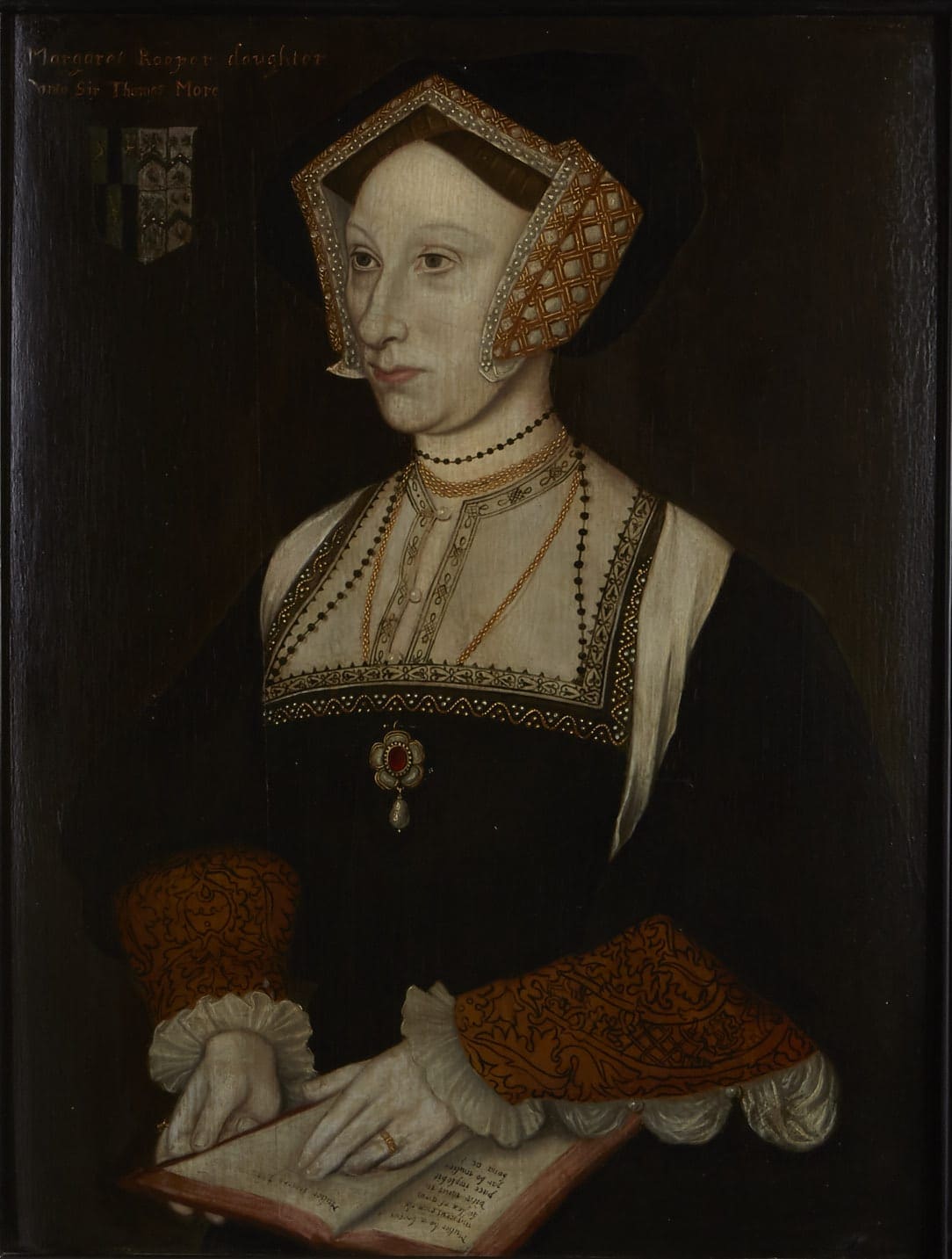
Margaret Roper
London Artist
1505-1544
Interested in selling a piece by Margaret Roper?
We have received top dollar for Margaret Roper works. Auction is the best way to quickly and transparently get maximum dollar for your artwork.
About Margaret Roper
Biography
Margaret Roper (1505-1544) was the eldest and favorite daughter of Sir Thomas More. Extremely well educated for a woman of her time, she was particularly well-known for her knowledge of Latin and Greek. Her translation into English of Precatio Dominica by the Dutch humanist Desiderius Erasmus, a close family friend, was one of the earliest translations ever
published by a British woman, and was very well-received. She was her father’s closest confidante in his later years, and his writings about her make it clear that he saw her as an intellectual equal. After his execution in 1535 for his refusal to accept Henry VIII’s departure from Catholicism, she and her lawyer husband, William Roper, were the people who ensured that his story did not die with him. Along with rescuing and preserving his head, Margaret carefully collected and protected More’s writings, particularly his letters from prison. Her diligence ensured the survival of the narrative of More’s martyrdom, likely leading to his eventual sainthood, conferred in 1933.
This portrait is a copy by a well-trained artist of part of an original portrait by Hans Holbein the Younger. Holbein, often seen as the greatest portrait painter of his generation, first came to England in 1526 with a letter of recommendation to Sir Thomas More from Erasmus, who he had painted previously. Along with painting his now-famous portrait of More, Holbein also painted a group portrait of More with his family. This painting was destroyed by a fire in the 18th century, and now survives only through copies. Copying paintings was a common practice in the 16th century, and Holbein’s works were in high demand. His portraits were extremely popular during his lifetime, and after he died, no other portrait painters initially stepped up to take his place. As a result, the market for copies of his portraits boomed in the century after his death, as collectors clamored for Holbeins of their own. The majority of these were created within a century of his death, a fact backed up for several pieces by dendrochronology. Research even suggests that many copies were created using Holbein’s own drawings and patterns, which had come into the possession of Henry VIII following Holbein’s death.
This portrait is most likely one of those early copies. There was evidently some desire to own portraits of Margaret, since multiple portraits of her alone copied from Holbein’s Sir Thomas More with his Family and Household are extant, including one in the National Trust in Knole, Kent. This was likely due to her influential status and fame as a model woman of letters. This painting is generally consistent with the other surviving copies; however, Roper’s bodice is here depicted as solid black and does not include a red panel as in other versions. The details of her costume are carefully rendered, with layers of mordant creating a low relief forming the gold decorations and chains in her garments. This painting includes Margaret Roper’s arms, which consist of her husband’s impaling her own, made up of Thomas More’s quartering her mother’s.
Get in touch for free auction estimate